Did you find a brown recluse or a wolf spider? While similar, they have key differences. This brown recluse vs wolf spider comparison is a good way to find out what you need to do next. We compare what you need to know to tell them apart. Differences include size, color, range, venom, hunting, and more.
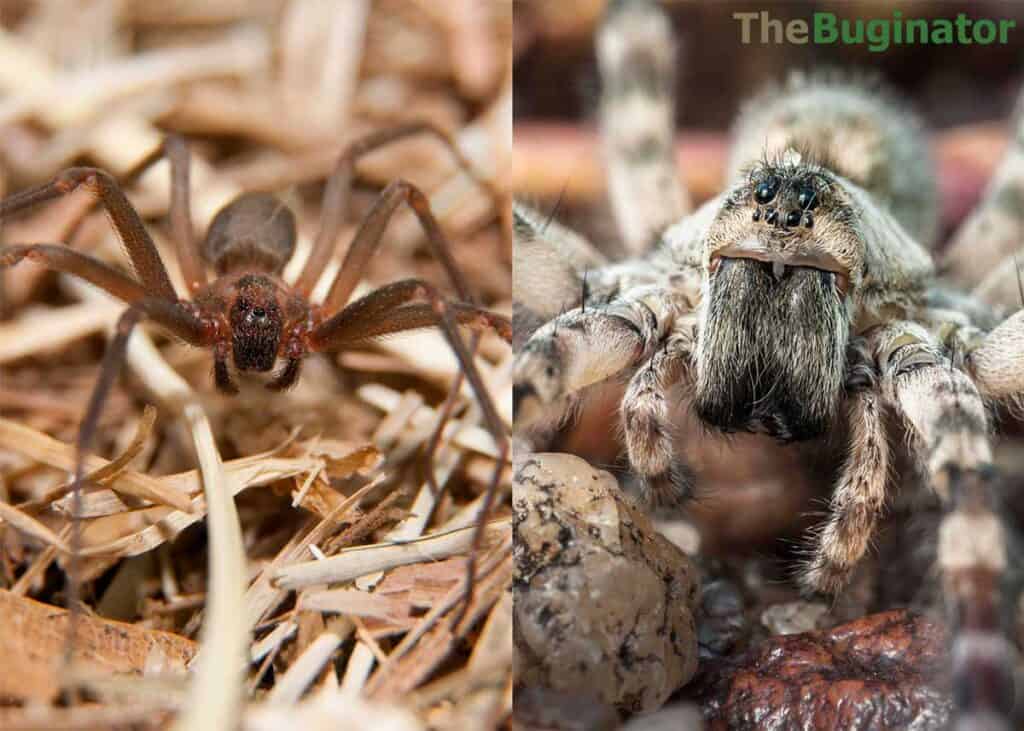
Table of Contents
Brown Recluse vs Wolf Spider: Comparison
| Differences | Brown Recluse | Wolf Spider |
|---|---|---|
| Dangerous | Necrotic Venom | No |
| Behavior | Reclusive | Aggressive |
| Size (inches) | 0.24 to 0.79 in | 0.4 to 1.38 in |
| Size (metric) | 6 to 20 mm | 10 to 35 mm |
| Range | United States (Midwest to Southern) | Worldwide |
| Classification | Loxosceles reclusa (Species) | Lycosidae (Family) |
| # of Species | 1 | 2888 |
| Habitat | Dry, private locations like woodpiles, garages, closets, and cardboard | Wide range for habitats, including rural and urban, coastal and alpine |
| Web spinner | Yes (Asymmetrical) | No |
| Color | Whitish to dark brown/gray | Varies on habitat (camouflage) |
| Eyes | 6 | 8 |
Appearance: Wolf Spider vs Brown Recluse Spider
Both wolf spiders and brown recluse spiders have eight legs and two sections of their bodies. As they look so similar, it’s not surprising that many people confuse the two.
Here are four physical differences between brown recluse spiders and wolf spiders.
1. Wolf Spiders are Larger
Wolf spiders are often much larger. They can reach almost 1.5 inches (35 mm) long.
In contrast, brown recluse spiders are usually only 0.5 inches long. They can grow up to 0.79 in (20 mm), sometimes even larger.
Size differences are a good way to distinguish a brown recluse from a wolf spider. Generally speaking, if the spider’s body (not including legs) would fit over a penny (0.75 in, 19 mm) it is probably a brown recluse. If the body is much larger than the diameter of a penny, it might be a wolf spider.
There are exceptions – some species of wolf spiders can be smaller than a brown recluse. In this case, rely on the next differences to help identify the species. Brown recluse spiders seldom grow larger than the diameter of a US penny.
Not only are wolf spiders larger, but they also have thicker bodies and legs. They have a distinctively different appearance compared to brown recluse spiders.

2. Wolf Spiders are Hairy Arachnids
Wolf spiders have long legs covered in fuzzy hair.
Brown recluse spiders have shorter legs and aren’t as hairy. The small hairs on their legs aren’t visible unless you look very close up or see a close-up photo.
3. Brown Recluse Spiders Have Violin Markings
Brown recluses have markings that resemble a violin on their backs.
If you get close enough to see their eyes, you can quickly determine the type of spider you have on your hands.
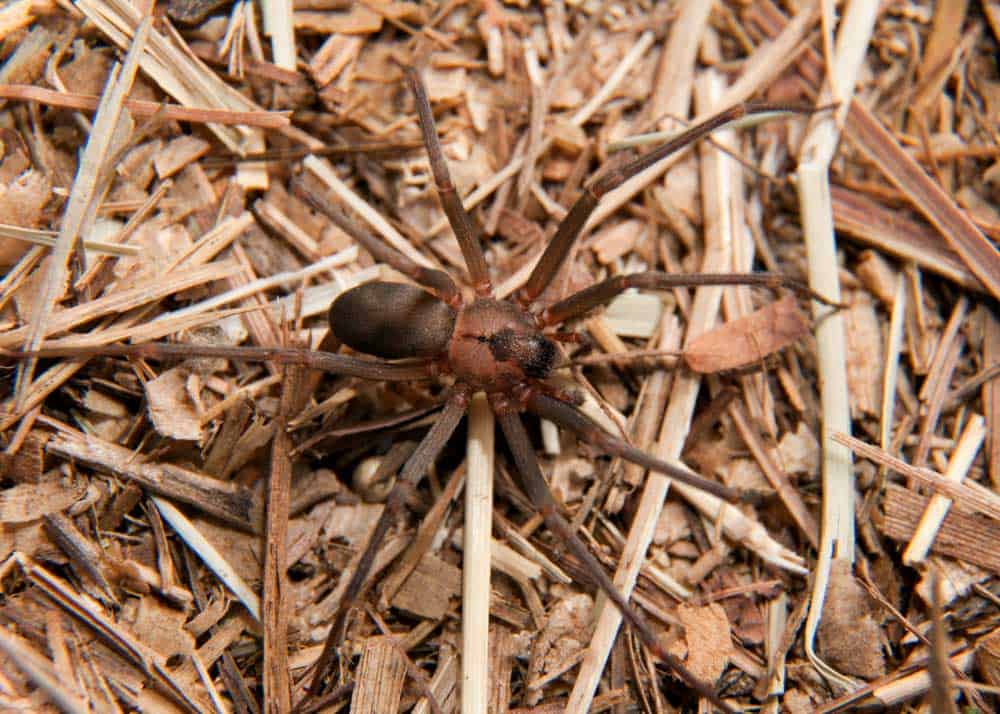
4. Brown Recluse Have Less Eyes
How many eyes do brown recluse spiders have? Brown recluse spiders have only six eyes. This sets it apart from wolf spiders that always have eight eyes to look for signs of danger and track their prey.
Wolf spiders have exceptionally good eyesight. It is this feature that allows them to hunt down their prey, instead of just waiting for it to wander by.
Their hunting proficiency is why they are named after wolves.
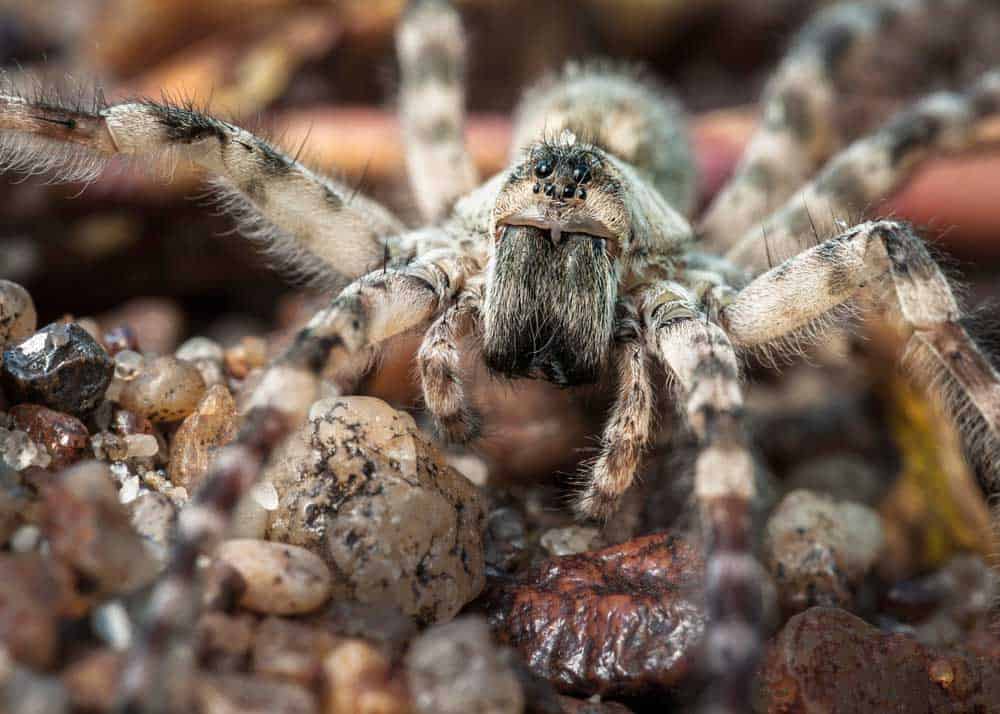
More reading: Do only spiders have 8 legs?
Danger: Brown Recluse vs Wolf Spiders Compared
Both brown recluse and wolf spiders will bite. Are they venomous? Or poisonous?
5. Are Brown Recluse Spiders Venomous?
Brown recluse spiders have a necrotic venom that, if bitten, might require medical attention. Bites from these spiders are uncommon, thanks to their reclusive, non-aggressive behavior.
Most bites are considered minor with no serious outcomes. Those at the most risk of systemic loxoscelism, include children, the elderly, and those already ill.
Brown recluse fangs are too small to penetrate most fabrics. Remember, these are small spiders.
Are wolf spiders venomous? Yes, wolf spiders have venom. In the past, necrotic bites have been attributed to wolf spiders – both in South America and Australia. But after careful study, these bites had been inaccurately attributed.
Wolf spider bites can cause swelling, pain, and itching.
Note: If bitten by any spider, it’s always a good idea to see a medical professional. In addition to the possibility of venom, you might also have the concern of infection.
6. Are Brown Recluse and Wolf Spiders Poisonous?
Neither brown recluse nor wolf spiders are poisonous. These spiders do have venom, something distinct to poison.
Brown recluse and wolf spiders have venom but aren’t poisonous. Poison much be ingested, absorbed, or inhaled. Venom must enter the bloodstream via a bite or sting.
Here’s more about the differences between venom and poison.
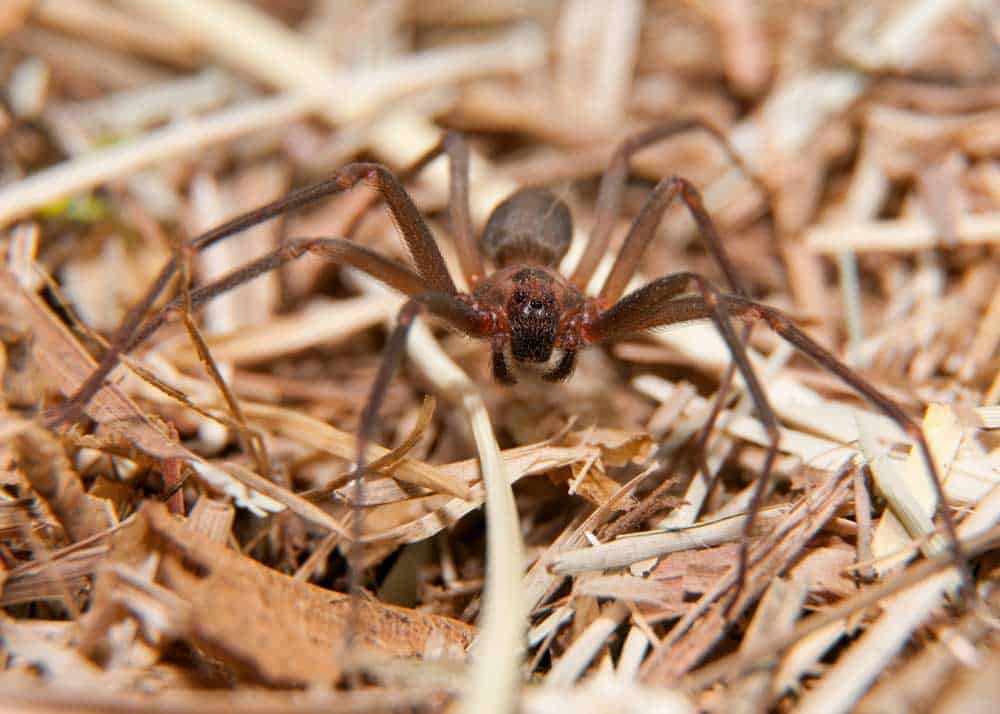
Behaviour Differences Between Brown Recluse and Wolf Spiders
When comparing the brown recluse vs wolf spider, keep in mind that they act in different ways.
7. Reclusive or Agressive?
Both types are solitary spiders. Though they can live in small groups, they prefer being alone. You may find multiple spiders living around your home, but you should notice that they seem to divide your property into separate areas.
There are exceptions to solitary behavior. In this Kansas home, they had an infestation of 2,055 brown recluse spiders. What’s especially notable, is that the inhabitants weren’t bitten once (zero envenomations).
This reclusive, passive behavior contrasts some media reports that portray brown recluse spiders as aggressive, and quick to bite.
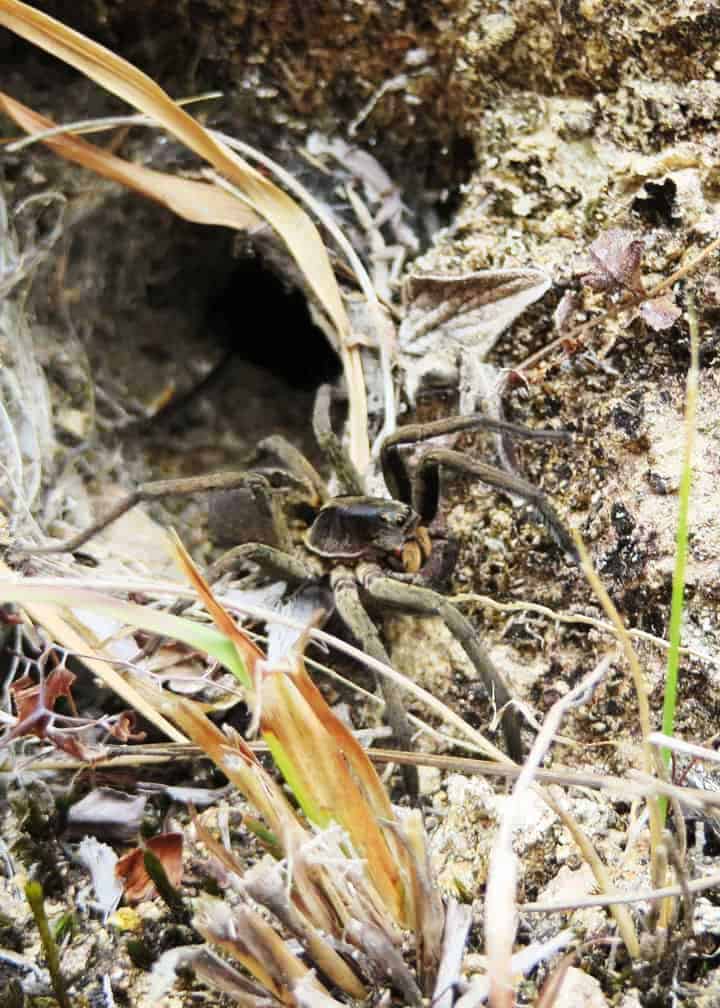
8. Hunting Behavior
Both spiders also use hunting methods to find prey rather than the webs that other spiders use.
Wolf spiders use their night vision to track their prey in the dark. They then attack and use their fangs to inject poison into the victim. Once the victim cannot move, the spider devours it.
Wolf spiders got their name because they tend to hunt in the same way that wolves do. This is a little inaccurate because wolves hunt in packs and the wolf spider is a solitary hunter.
Brown recluse spiders also hunt at night. Unlike wolf spiders that can come out and hunt during the day, brown recluse spiders prefer sleeping when it’s light outside.
This behavior by brown recluse spiders is different from most web weavers. The males travel further from the lair, while the female remains closer to the web.
Both spiders are excellent insect predators.
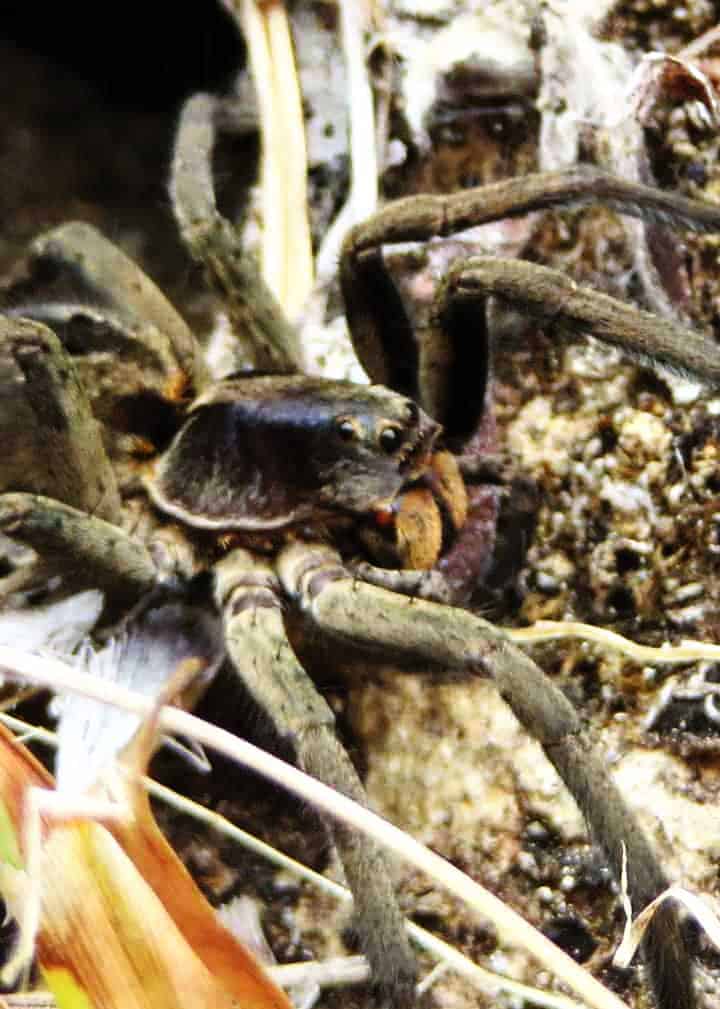
9. Breeding
The differences between the two spiders include how they breed and mate.
Male wolf spiders are responsible for attracting females to them. After they mate, the female finds a new spot to lay her eggs. She creates an egg sac that can hold up to 100 babies and carries the sac on her body for up to two weeks, which is when the eggs hatch.
The mother will keep the spiderlings in her sac for around three weeks before she opens it and allows the babies to come out. She keeps the babies close to her for a few days before they leave her.
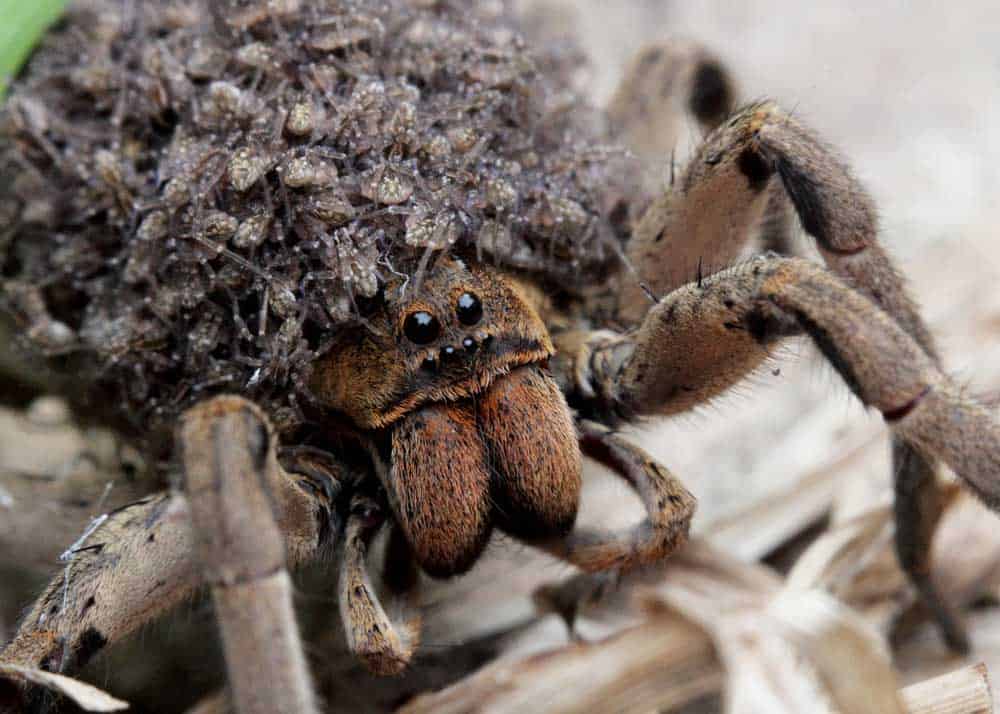
Brown recluse spiders usually only mate in the warmer months of summer (June to September). The mother creates an egg sac that holds up to 50 eggs and leaves it in a safe spot.
Brown recluse females can attract and mate with several males during the mating season. Unlike wolf spider females that stay with their babies, brown recluse spiders deposit their egg sacs and never return. Their babies become independent right away.
10. Lifespan
One thing you may not know about these spiders is that they can survive quite a while without food. They learn how to adapt and adjust their bodies to ensure they can survive when prey isn’t available.
- Brown recluse spiders usually live for around two years and can last for up to six months without access to water or food.
- Female wolf spiders live for several years, while males live for only a year. Both males and females can survive for up to a week without food or water.
Where Do Wolf Spiders and Brown Recluse Spiders Live?
In this section, you’ll learn all about where to find each type of spider.
11. Range: Brown Recluse and Wolf Spider
Another of the key differences between wolf and brown recluse spiders is where they live.
Brown recluse spiders are native to the United States. They can be found from the Midwest to the Southern States. These include Iowa, Illinois, Ohio, and Indiana. They can also be found from Texas to Georgia, and north to Kentucky.
Brown recluses prefer warm areas, which is why you’ll primarily find them in the southern states.
Does California have brown recluse spiders? No, California doesn’t have brown recluse spiders. While there have been a few specimens collected in California, these are often related to a recent move or shipment from the Midwest.
“The biological evidence that is available resoundingly deflates any of the arachno-propaganda that is constantly being given new life with each newspaper story or word-of-mouth tale of terror. I emphatically state THERE ARE NO BROWN RECLUSE SPIDERS LIVING IN CALIFORNIA.” ~ Rick Vetter, Arachnologist at the Department of Entomology, University of California, Riverside, CA
Does Australia have brown recluse spiders? No, Australia doesn’t have the brown recluse species (Loxosceles reclusa) but it does other recluse or fiddleback spiders (members of the Loxosceles genus). They aren’t native but have been introduced into the country.
Wolf spiders live almost everywhere in the world. They often prefer colder climates and are more commonly found around mountain areas.
Years ago, we found a wolf spider burrow in Ecuador’s Andes mountains. Here’s a glimpse of this large wolf spider. The tunnel had a 4-inch diameter. Here’s more about our experience with spiders in Ecuador.
These spiders are common in the United States. Here are other common house spiders.
12. Habitats of Wolf Spider and Brown Recluse
Though you may not see them in your home, you can come across both types outside.
Brown recluse spiders prefer quiet and dark areas where they can create small nests. They often live in woodpiles and rocks, but they can also live in weeds and overgrown areas. When the temperature drops, they may move closer to your home.
Wolf spiders like to move around and usually build their homes in areas with a lot of grass or open space.
If you stumble across a spider den with silk woven through it, you likely found the den of a wolf spider.
Because there are almost 3000 species of wolf spiders, their preferred habitats vary depending on many factors.
Why are brown recluse spiders confused with wolf spiders? One reason people confuse the two types is that both spiders come in dark colors that help them blend with the environment.
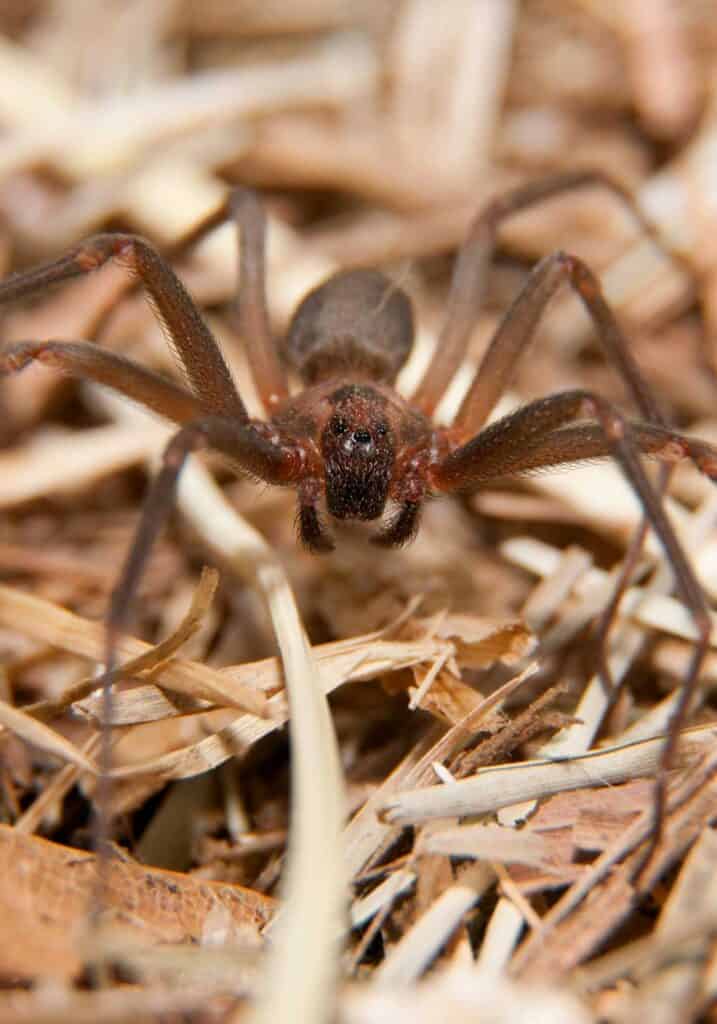
Don’t like spiders in your house? Here’s how to get rid of spiders
Know the Key Differences: Brown Recluse vs Wolf Spiders
Both brown recluse and wolf spiders can bite you or your pets.
Wolf spiders are less dangerous because they lack the necrotic venom of the brown recluse. Because of their venom, brown recluse spider bites are more serious and may require medical intervention.
Hopefully, this brown recluse vs wolf spider comparison has helped you to identify what type of spider you found.
Have you seen these species up close? Let me know in the comments!
- About the Author
- Latest Posts
Bryan Haines is a co-founder and writer at The Buginator. And is working to make it the best resource for taking back the outdoors from biting, stinging pests.
He also blogs about travel at Storyteller.Travel and photography at Storyteller Tech. Bryan is a partner at Storyteller Media, a publishing company he runs with his wife, Dena.

James
Wednesday 6th of July 2022
Yes I have seen both of them, I didn't see the brown recluse when she bit me, but I knew within the hour I've been bitten. A couple of days later I ran across her in the box I tore up.. it's been six weeks ago and it is very bad. I tried to take care of it myself.. I just got out of the hospital now I'm going to wound care. I took photos from day two to now
Bryan Haines
Thursday 7th of July 2022
Sounds rough, sorry to hear that you had such a hard time.